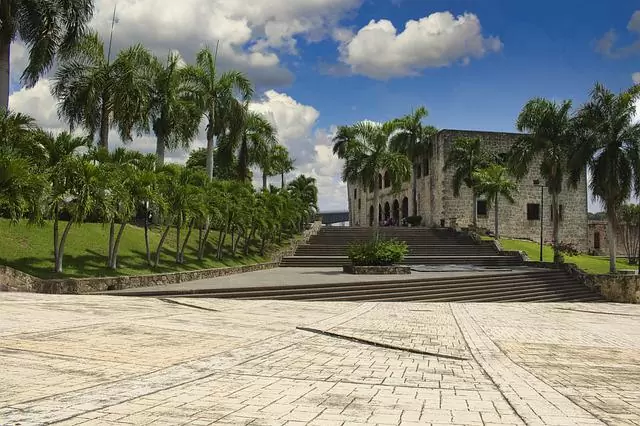Santo Domingo is the capital of the Dominican Republic. With approximately 2.5 million inhabitants, it concentrates the politics, economy and culture of the country.
Santo Domingo is the first city of the New World and the place where we can say that the modern history of America began. Seeing the first cathedral, the first hospital, walking through the first streets that were built in the colonial area and imagining how things were 500 years ago is an opportunity not to be missed.
Without forgetting the historical weight that Santo Domingo possesses, it is without a doubt a destination for entertainment lovers. The city is home to the country’s biggest carnival celebrations, merengue festivals, discos, and great shopping. No other city in the Caribbean offers a greater variety of restaurants and nightlife than Santo Domingo (or “the capital” as the Dominicans call it). There are so many restaurants in this city that it is almost impossible, even for those who live here, to have visited them all. It is a city that never sleeps.
Santo Domingo is located on the southern coast of the Dominican Republic, halfway between the western border with Haiti and the eastern coast. The north and east coasts are about four hours away. To the east, the first major city you will find is Boca Chica. To the west, you can visit the beaches of Palenque and Nizao, as well as the recently rehabilitated Pomier Caves (the largest in the Caribbean), which served as a refuge for the indigenous inhabitants of Hispaniola. To the north, you can visit the cities of Bonao and Jarabacoa, passing by the highest mountains in the Caribbean.
History of Santo Domingo
One could say that the current capital of the Dominican Republic, Santo Domingo, is the result of an almost coincidence. It is in fact the third attempt to create a “capital”.
When Christopher Columbus arrived on the island, he created the first colony in present-day Haiti, called Villa la Navidad, which burned to the ground and all of its inhabitants died within the first year of the colony’s life. The second colony was located west of present-day Puerto Plata, called La Isabela, founded on January 6, 1494. This colony had a lifespan of five years and had to be abandoned due to the diseases and disasters that hit it from the beginning. Finally, Columbus’ brother, Bartholomew, founded the third colony, La Nueva Isabela, on the eastern bank of the Ozama River, fleeing La Isabela due to a rebellion caused by the discontent of its inhabitants. Over time, La Nueva Isabela moved to the western bank of the Ozama River, which is now the capital of the Dominican Republic, Santo Domingo.
Origin of the name Santo Domingo
The city of Santo Domingo owes its name to the fact that the city was founded at the time when Santo Domingo Day was celebrated. This is reflected in the chronicles of Oviedo and Fray Bartolomé dos Cronistas de Indias. But the real name of the capital of the Dominican Republic is Santo Domingo de Guzmán, a name that was given to it in 1966 with the creation of the Constitution of the Dominican Republic. However, other historians indicate that since its beginnings it has always been called Santo Domingo de Guzmán.
https://goo.gl/maps/zeSmzCQK3XaYs6EaA

